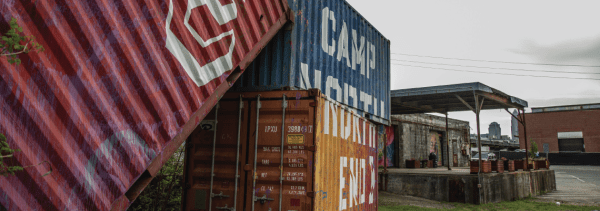Think Charlotte is bland? New awards celebrate good urban design

When you think “Charlotte” and “urban design,” do you think “bland” or “exciting”?
A new awards series, the Charlotte Urban Design Awards, is meant to prompt you to think more of the latter and less of the former. While Charlotte might get an unfair rap as a city of bland office towers and five-story, stick-built apartments, the Urbies are highlighting some of the exciting design work going on throughout the city – and, hopefully, raising the standards for everyone.
Loosely based on a series of tongue-in-cheek awards given out for years by Mary Newsom, a longtime Charlotte Observer columnist and former Urban Institute Director of Regional Policy Initiatives, the Urbies highlighted everything from individual street designs to whole neighborhoods.
“Memorable cities are often outcomes of memorable designs. What do people remember when they think of Charlotte? These awardees are answering that question,” said Charlotte Planning Director Taiwo Jaiyeoba.
Presented last week by the city of Charlotte Urban Design Center and the UNC Charlotte School of Architecture, the award winners include:
- Great Transit/Trail-Oriented Development – The Metropolitan
- Great 10-Minute Neighborhood – Plaza Midwood
- Great Neighborhood Center – NoDa
- Great Community Activity Center – Camden Road
- Great New Life for an Old Place – Optimist Hall
- Great Public Space – Little Sugar Creek Greenway
- Great Placemaking – Camp North End
- Great Street – Tryon Street
- Great Street Redesign – 9th Street
Great Street Action – Black Lives Matter Mural
Great Urban Architecture – The Railyard
Great Urban Design Champions – Hugh McColl, Harvey Gantt
Great Neighborhood Activism – Darryl Gaston (in memoriam)
Great Student Project – Queens Park Proposal/NS Railyard Design
The Crown Jewel – Historic West End Initiatives
A panel of members from the citizen jury that decided on the awards spoke last week about the Urbies, and lessons we can learn (Disclosure: The author of this piece was on the jury).
Lesson 1: Pay more attention to the street
When we think “urban design,” many people probably jump straight to buildings and how they look. But the real heart of any good neighborhood is the street, and street-level activity.
“Urban design is the most immersive and largest art form there is,” said Prof. Deb Ryan, chair of the jury. “Some of the most important spaces are city streets, and we sometimes overlook them.”
That’s a challenge, particularly in Charlotte, where the state owns and maintains numerous main streets throughout the city. Award-winning streets, like Tryon in uptown, provide a mix of shops, restaurants, places to sit, gather and human-scaled activities.
“We have a lot of state-owned roads. Unfortunately, they took the mentality of moving cars as quickly as possible through the country into the city… An awful lot of folks just think of them as places to drive.”
Lesson 2: Look for new life in old places
Some of the most popular locations picked for awards are new incarnations of old places. Winners from Little Sugar Creek Greenway (formerly a completely capped, smelly, polluted, buried creek) to Camp North End (an industrial site that’s been, at times, a car factor, a missile plant and a distribution center) illustrated the point.
“You knew there was a creek there when it rained, because it would flood and all those buildings would get flooded,” said landscape architect Beth Poovey of LandDesign, describing Little Sugar Creek before its revival.
“The old buildings are incredibly important,” Newsom said of NoDa, known as North Davidson before its hip rebranding. “They’ve transitioned over time, but the buildings themselves are what make NoDa.”
Lesson 3: It doesn’t have to be perfect, just vibrant
Pointing again to NoDa, Newsom outlined much of what the neighborhood doesn’t have: Extra-wide sidewalks, abundant shade trees, utilities tucked away and buried so no poles interrupt walkers and stroller-pushers.
Yet the neighborhood is still vibrant, known for its restaurants, shops, music venues and street life. Even without the perfect design features, NoDa works because it’s built on a human scale, with a mix of interesting places, different uses and abundant things to do at street-level.
“You don’t really need all those things,” said Newsom. “They make it a better place for sure, and if you were building it from scratch you’d build those things…My big worry is too many glitzy developments will destroy it.”